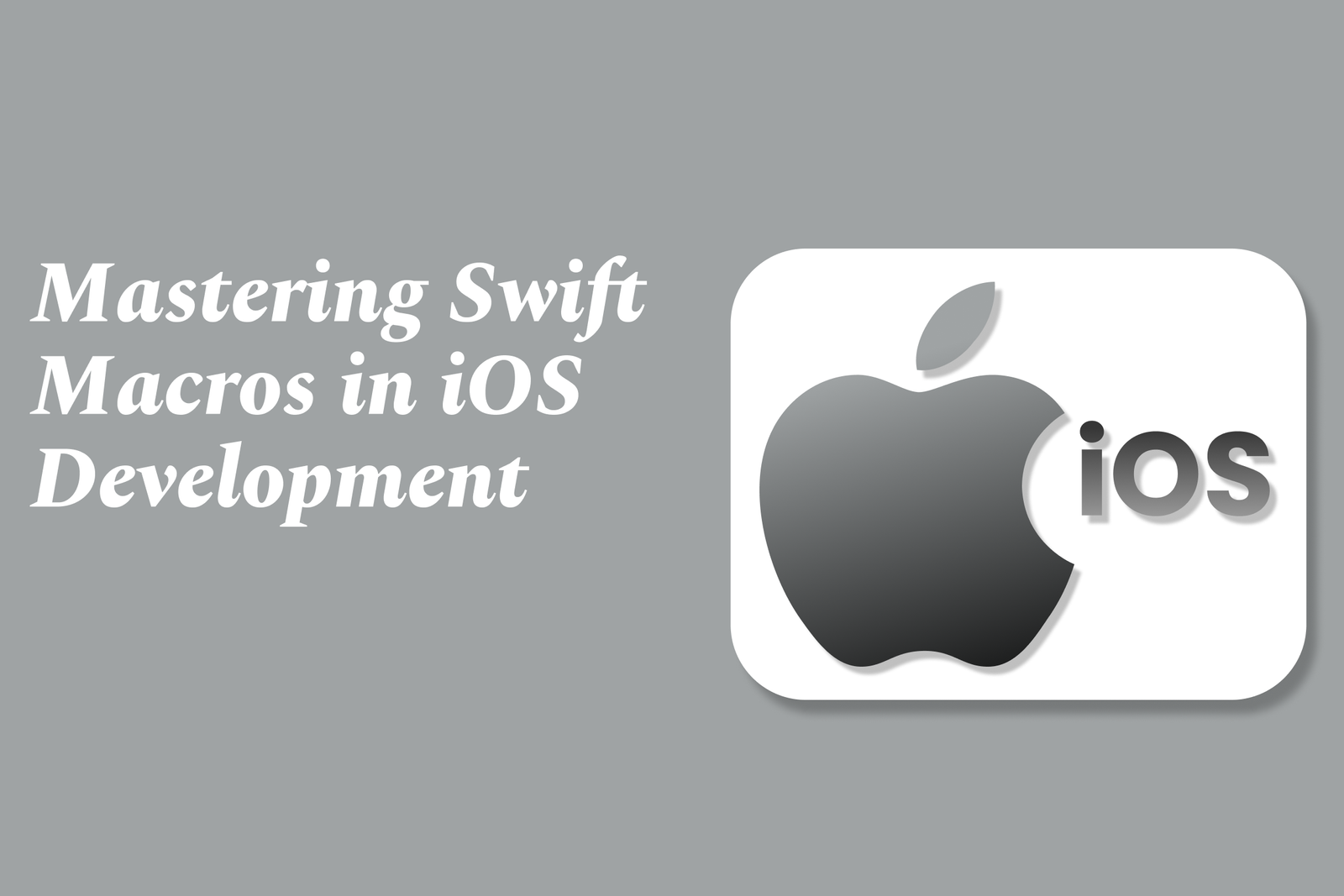Mastering swift macros in iOS development
Mastering Swift Macros in iOS development means leveraging Swift’s compile-time code generation and checks to reduce boilerplate, catch errors early, and create expressive, safer APIs—enhancing both productivity and code quality in modern Swift projects.
Mastering Swift Macros in iOS Development
1 ) Introduction to Swift Macros
Swift Macros, introduced in Swift 5.9 (WWDC 2023 ), enable developers to extend the Swift compiler with custom compile time checks and new kinds of expressions. They purposefully reduce boilerplate code, enhance expressiveness in libraries, and improve code safety by catching errors early during compilation.
2 ) What Are Swift Macros?
Swift Macros allow insertion of code during compilation, enabling validation and generation of source code before runtime.
Example: A macro can validate URLs at compile time, preventing invalid URLs from causing runtime crashes. This is called a freestanding expression macro, syntax example:
swift
let swiftLeeBlogURL = #URL("https://www.avanderlee.com")
Behind the scenes, this macro performs the URL validation and throws compiler errors if invalid, replacing the need for runtime checks.
3 ) Types of Macros and Their Roles
Swift categorizes macros into two main types:
Freestanding Macros: Invoked with a hashtag (#), creating expressions or declarations independently.
Attached Macros: Applied with an at sign (@), modifying or augmenting existing declarations such as adding properties, conformances, or accessors.
There are seven macro roles in total:
1 ) `@freestanding(expression)` — Returns a value (like the URL example)
2. `@freestanding(declaration)` — Creates new declarations
3. `@attached(peer)` — Adds declarations alongside an existing declaration
4. `@attached(accessor)` — Adds accessors (getters/setters) to properties
5. `@attached(memberAttribute)` — Adds attributes to members of a type or extension
6. `@attached(member)` — Adds declarations inside a type or extension
7. `@attached(conformance)` — Adds protocol conformances to types or extensions
Developers can attach multiple roles to a macro to tailor its behaviors.
4 ) How to Write a Custom Macro
Begin by creating a new Swift Package in Xcode, choosing the “Swift Macro” option.
Implement your macro logic to perform compile time analysis and generate code/test errors as needed.
Utilize macro roles appropriately depending on your intended use case (e.g., generating code, enforcing checks).
Writing custom macros empowers you to automate repetitive tasks, enforce coding standards, or create domain specific language extensions within Swift.
5 ) Benefits and When to Use Swift Macros
Eliminate boilerplate code and reduce runtime errors by shifting checks to compile time.
Create more expressive and safer APIs.
Automate code generation and reduce manual coding overhead.
Ideal for teams focused on maintaining clean, efficient, and robust Swift projects with custom compiler behavior.
Mastering Swift Macros equips iOS developers with cutting edge tools to write cleaner, safer, and more maintainable Swift code by leveraging compiler extensions introduced in Swift 5.9.
https://justacademy.in/news-detail/flutter-developer-roadmap-after-2025
https://justacademy.in/news-detail/react-native?s-new-cli-tools:-efficiency-at-its-best
https://justacademy.in/news-detail/breaking-changes-in-latest-flutter-version
https://justacademy.in/news-detail/flutter-and-tensorflow-lite-examples
https://justacademy.in/news-detail/travel-&-hotel-apps-using-flutter
Related Posts
Java supports GDPR and data privacy by enabling secure data handling through encryption, controlled access, and precise data management. It allows developers to minimize PII exposure, ensure data confidentiality, and design workflows that comply with data protection regulations effectively.
Java code quality tools have evolved to include advanced static analysis, integrated security checks, and AI-powered code reviews. These updates help developers detect bugs, enforce coding standards, and enhance security, streamlining the development process and improving overall code reliability.
Java remains a cornerstone in big tech companies, evolving with modern features like records, pattern matching, and virtual threads. Its robust ecosystem, enhanced performance, and growing AI integrations keep it vital for both legacy systems and innovative new projects.
Java and CI/CD pipeline optimizations streamline Java application development by automating builds, tests, and deployments. They improve efficiency through parallelization, caching, and secure secrets management, enabling faster feedback loops and more reliable, scalable software delivery.
Java supports modern cryptography standards through its flexible Java Cryptography Architecture (JCA), enabling integration of advanced algorithms like AES, EdDSA, and post-quantum tools. Libraries like Bouncy Castle offer FIPS-certified, hardware-accelerated implementations for secure development.
Java 23 enhances record patterns by enabling concise, direct destructuring of record components within pattern matching, simplifying type checks and data extraction. This improvement boosts code readability and expressiveness by reducing boilerplate in handling immutable data classes.
Java remains a top choice for mobile app backends, powering scalable, secure, and high-performance server-side solutions. Latest trends include cloud-native microservices, reactive programming, and enhanced JVM optimizations, enabling efficient, flexible, and robust mobile backend development.
Java SE 24 and LTS Java SE 21 offer enhanced features and performance, while Apache Spark 4.0.0 introduces Scala 2.13 support and advanced ML and SQL capabilities. Together, they empower developers to build scalable, high-performance data applications with modern tools.
JUnit 5 modernizes Java testing with a modular architecture, improved assertions, and seamless Java 8+ support. Beyond JUnit, tools like Mockito and AssertJ enhance mocking and assertions, creating a powerful, flexible ecosystem for writing clean, efficient Java unit tests.
Java plays a pivotal role in cloud automation tools by providing a robust, platform-independent language used to build scalable automation frameworks like Jenkins and Selenium, enabling efficient CI/CD pipelines, testing, and orchestration across diverse cloud environments.










